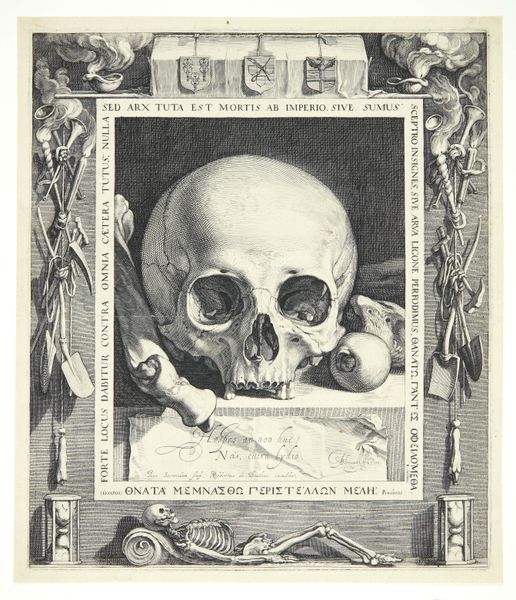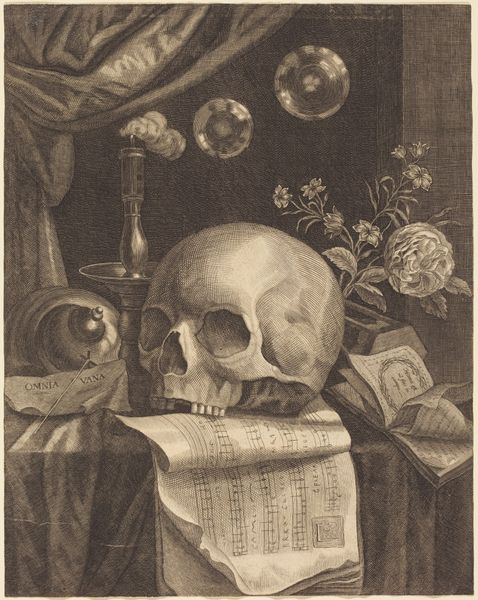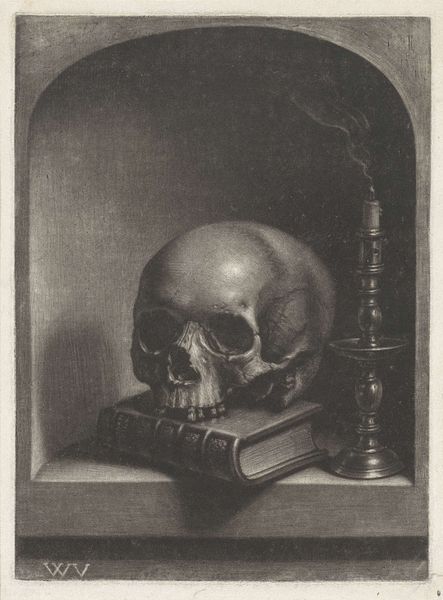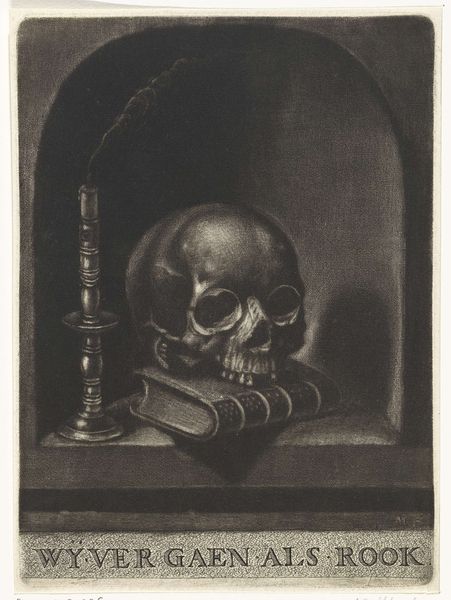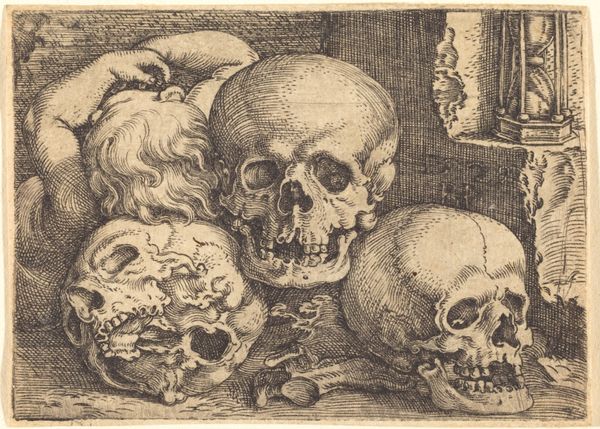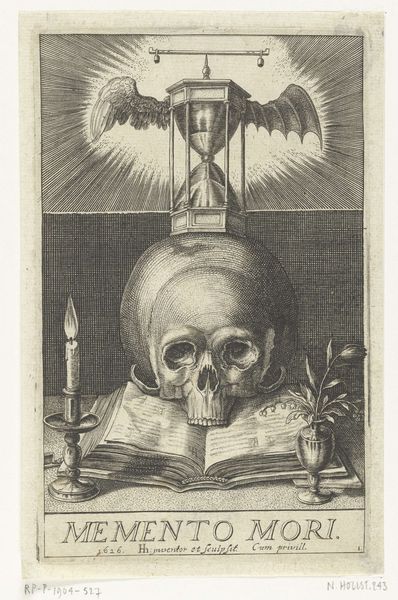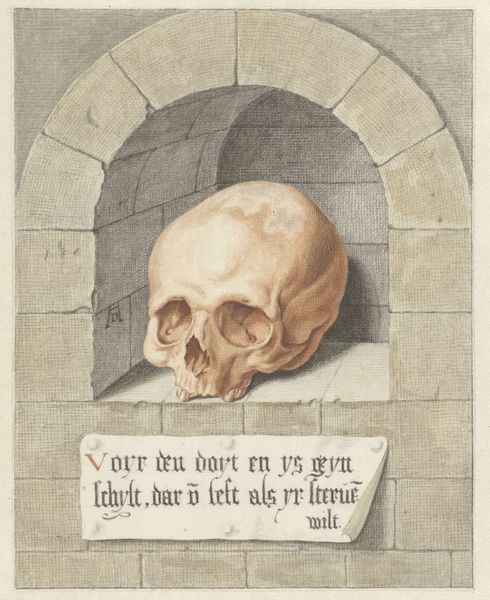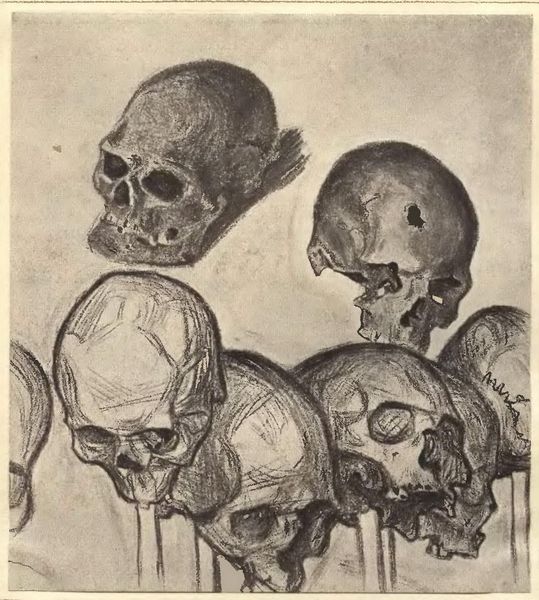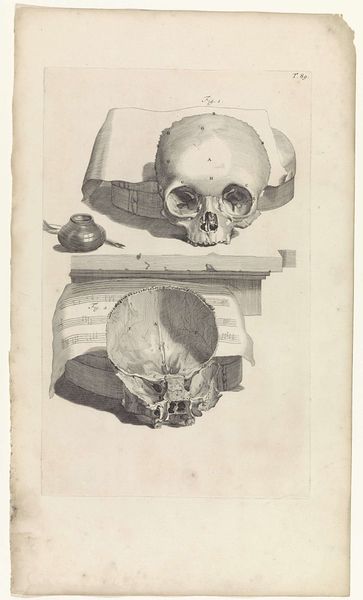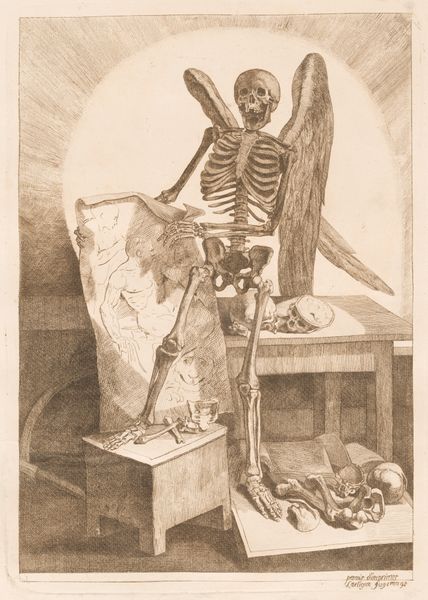
tempera, print, woodcut
#
medieval
#
tempera
# print
#
caricature
#
figuration
#
form
#
vanitas
#
woodcut
#
line
#
northern-renaissance
#
portrait art
#
realism
Copyright: National Gallery of Art: CC0 1.0
This woodcut, ‘Skull,’ was made by Hans Wechtlin I around the early 16th century. Woodcut is a relief printing process: the artist carves into a block of wood, removing the areas that will not receive ink. The remaining raised surface is then inked and pressed onto paper. The striking image of the skull has been achieved through careful, controlled cutting. Observe the precise lines that define the contours of the skull, and the intricate cross-hatching used to create shadow and depth. These are not spontaneous gestures, but the result of painstaking labor. In Wechtlin's time, printmaking was a key technology in the dissemination of images and ideas. Woodcuts like this were relatively inexpensive to produce, making them accessible to a wider audience. As a result, printmakers were able to engage with social issues in ways that had not been possible before. Considering the material and the making, we can see that even a seemingly simple image like this can tell us a great deal about the society and culture in which it was created. It bridges the fine arts and the graphic arts, and reminds us of the importance of skilled labor.
Comments
No comments
Be the first to comment and join the conversation on the ultimate creative platform.
